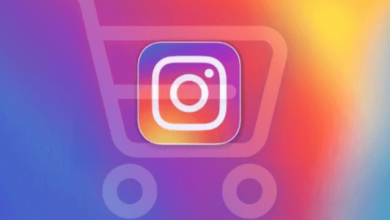How Instagram Ads Work: A Complete Guide to Paid Promotions

Instagram has transformed from a simple photo-sharing app to a powerful marketing platform that allows businesses to reach over a billion monthly active users. With Instagram Ads, businesses can promote their products, services, or brand directly to a highly engaged audience. Paid promotions on Instagram enable businesses to leverage precise targeting options, compelling ad formats, and detailed analytics to optimize their marketing efforts.
In this complete guide, we will explore how Instagram ads work, the types of ads available, and how to set up an effective paid promotion campaign. By the end of this guide, you’ll have the insights and tools you need to create successful Instagram ad campaigns that drive measurable results.
What Are Instagram Ads?
Instagram Ads are paid posts that businesses can use to promote their products, services, or brand to a targeted audience. These ads appear in various placements across the platform, including users’ Feeds, Stories, Reels, and Explore pages. Unlike organic posts, Instagram Ads include a “Sponsored” label and often feature a call-to-action (CTA) button to encourage users to take specific actions, such as visiting a website, signing up for a newsletter, or purchasing a product.
The ads are created and managed through Facebook’s Ads Manager, which provides access to powerful tools for audience targeting, budgeting, and performance tracking. Instagram Ads are highly customizable, allowing advertisers to create a range of different ad formats that suit their business objectives.
Why Instagram Ads Matter for Businesses
Instagram has become one of the most effective platforms for businesses looking to reach a younger, tech-savvy audience. With more than 500 million people using Instagram Stories daily and users spending an average of 30 minutes per day on the app, businesses can engage with potential customers through visually rich and interactive content.
Instagram Ads are especially effective because they can be tailored to specific marketing goals, whether it’s building brand awareness, driving website traffic, or increasing sales. Here are some key reasons why Instagram Ads are an essential part of modern marketing:
- Highly Targeted Advertising: Instagram allows businesses to use Facebook’s sophisticated targeting tools to reach the right audience based on demographics, interests, behaviors, and more.
- Diverse Ad Formats: Instagram offers several ad formats that allow businesses to tell their story in various ways, from simple photos to dynamic videos and interactive carousels.
- Seamless Integration: Instagram ads blend seamlessly with organic content, making them less intrusive and more likely to capture user attention.
- Strong Engagement Rates: Instagram has some of the highest engagement rates of any social media platform, meaning users are more likely to interact with ads.
- Detailed Analytics: Instagram Ads provide detailed insights and metrics to help businesses measure the success of their campaigns and make data-driven decisions.
Types of Instagram Ads
Instagram offers several ad formats, each designed to achieve different marketing objectives. Understanding these formats will help you select the right one for your campaign:
- Photo Ads
Photo ads are the most common type of ad on Instagram. These are single-image ads that appear in users’ feeds and can include a caption and a CTA button. Photo ads are ideal for showcasing a product, a specific offer, or a brand message. For example, a clothing brand might use a photo ad to highlight a new clothing line with a “Shop Now” button. - Video Ads
Video ads allow you to share more engaging content by telling a story or demonstrating a product in action. Instagram supports video ads up to 60 seconds long, although shorter videos often perform better in terms of capturing attention. Video ads can appear in the main feed, Stories, or Reels. These ads are perfect for demonstrating how your product works, sharing customer testimonials, or creating a mini-commercial. - Carousel Ads
Carousel ads let users swipe through a series of images or videos in a single ad. Each image or video in the carousel can have its own link, allowing businesses to showcase multiple products or tell a longer story. For example, an online retailer might use a carousel ad to display different items from a product collection, with each item linking to its product page. - Story Ads
Instagram Story ads appear in between users’ Stories, taking up the entire screen for a more immersive experience. Since Stories are vertical and full-screen, they allow businesses to create engaging and visually captivating ads. Story ads can include interactive elements like polls, quizzes, and countdowns, making them ideal for driving engagement and conversions. - Reels Ads
Reels ads are short-form video ads that appear between organic Reels content. These ads can be up to 60 seconds long and are perfect for businesses looking to create fun, engaging content similar to TikTok-style videos. Reels ads can help you connect with a younger audience and tap into viral trends. - Explore Ads
Explore ads appear in the Explore feed, where users discover new content based on their interests. Ads in this section are shown to users who are looking for new accounts, products, and content to follow, making them ideal for reaching new audiences. Explore ads can be in photo or video format. - Shopping Ads
Instagram Shopping ads allow businesses to tag products directly within their ads, making it easier for users to learn more about and purchase products without leaving the app. Shopping ads can appear in Feeds, Stories, and the Explore section, and they’re a great tool for e-commerce brands looking to drive direct sales.
Setting Up an Instagram Ad Campaign
Now that you’re familiar with the different types of Instagram ads, let’s walk through the steps to create an Instagram ad campaign:
- Choose Your Objective
The first step in setting up your campaign is to choose your objective. Instagram offers several objectives, such as brand awareness, reach, traffic, engagement, app installs, video views, lead generation, and conversions. Your objective will determine how Instagram optimizes your ads and what type of audience it targets. - Define Your Audience
Instagram Ads allow you to target your audience based on a wide range of factors, including age, gender, location, interests, and behaviors. You can also create custom audiences based on data from your website (e.g., users who have visited your site) or lookalike audiences to reach new users similar to your existing customers. - Set Your Budget and Schedule
You can set a daily or lifetime budget for your Instagram ad campaign. A daily budget limits how much you spend each day, while a lifetime budget sets a cap on the total amount spent over the course of the campaign. You can also choose to run your ads continuously or schedule them for specific dates and times. - Design Your Ad
The creative part of your campaign involves designing your ad. Depending on the format you choose (photo, video, carousel, etc.), you’ll need to create high-quality visuals and write engaging copy. Be sure to include a compelling call-to-action (CTA) that encourages users to take the next step, such as visiting your website or making a purchase. - Monitor and Optimize
Once your ad is live, you’ll want to track its performance using Facebook’s Ads Manager. Metrics like impressions, reach, clicks, conversions, and cost per action will help you determine how well your ad is performing. Use this data to optimize your campaign by adjusting your targeting, budget, or creative elements to improve results.
Audience Targeting Options
One of the most significant advantages of Instagram Ads is the ability to target specific audiences. Instagram uses Facebook’s robust targeting tools, allowing advertisers to narrow their audience based on various criteria:
- Demographics: Target users based on factors like age, gender, and location.
- Interests: Reach users based on their interests and hobbies, such as fitness, fashion, or technology.
- Behaviors: Target users based on their purchasing behaviors, device usage, and online activity.
- Custom Audiences: Upload your own customer data (e.g., email lists) to create custom audiences for retargeting or use website tracking to target users who have interacted with your site.
- Lookalike Audiences: Find new potential customers by targeting users who share similar characteristics to your existing customers.
Budgeting for Instagram Ads
Instagram Ads operate on a bidding system where you can control how much you’re willing to spend for each action (click, impression, or conversion). You can choose between two main bidding options:
- Cost Per Click (CPC): You pay each time someone clicks on your ad.
- Cost Per Mille (CPM): You pay based on how many times your ad is shown (per 1,000 impressions).
Instagram Ads allow you to set either a daily or lifetime budget. A daily budget limits how much you spend each day, while a lifetime budget spreads your spending across the entire campaign duration. You can also choose manual or automatic bidding, where Instagram will automatically adjust bids to get the best results within your budget.
Measuring Success
Tracking and analyzing the performance of your Instagram ad campaigns is crucial for optimizing your results. Here are some key metrics to monitor:
- Impressions and Reach: Impressions measure how many times your ad was shown, while reach measures the number of unique users who saw your ad.
- Click-Through Rate (CTR): This measures the percentage of users who clicked on your ad after seeing it. A higher CTR indicates that your ad is relevant and engaging.
- Conversions: Track how many users completed a desired action (such as a purchase or sign-up) after clicking on your ad.
- Return on Ad Spend (ROAS): This metric calculates how much revenue you’ve generated for every dollar spent on ads. It’s a key indicator of the profitability of your campaign.
Best Practices for Instagram Ads
To get the most out of your Instagram ads, follow these best practices:
- Use High-Quality Visuals: Instagram is a visually driven platform, so invest in high-quality photos or videos that capture attention.
- Create Engaging Content: Focus on storytelling and delivering value to your audience. Ads that evoke emotions or tell a compelling story tend to perform better.
- Test Different Formats: Experiment with different ad formats, such as videos, carousels, and Stories, to see which ones resonate best with your audience.
- Optimize for Mobile: Since most users access Instagram on mobile devices, design your ads with mobile-friendly dimensions in mind.
- Include a Strong Call-to-Action: A clear, direct CTA will encourage users to take the desired action, whether it’s visiting your website, signing up for a newsletter, or making a purchase.
Frequently Asked Questions (FAQs)
1. How much should I spend on Instagram ads?
The cost of Instagram ads varies based on factors like your targeting, ad format, and bidding strategy. On average, businesses spend between $0.20 to $2.00 per click, but setting a budget that aligns with your overall marketing goals is key.
2. Can I run Instagram ads without a Facebook account?
No, Instagram ads are managed through Facebook Ads Manager, so you’ll need a Facebook account to create and manage your ads.
3. What’s the most effective Instagram ad format?
The best format depends on your campaign goals. For quick engagement, video ads tend to perform well, while carousel ads are great for showcasing multiple products.
4. How can I track the performance of my Instagram ads?
Facebook Ads Manager provides detailed analytics for your Instagram ads, including metrics like impressions, clicks, and conversions. Be sure to set up conversion tracking to measure specific actions taken on your website.
5. What is the ideal length for an Instagram video ad?
While Instagram allows video ads up to 60 seconds, shorter videos (15-30 seconds) tend to perform better, capturing attention quickly and delivering a clear message.
6. How do I improve my ad’s performance?
To optimize your ad’s performance, regularly review your analytics and make adjustments to your targeting, ad creatives, or bidding strategy based on the data.
Conclusion
Instagram Ads are a powerful tool for businesses of all sizes to reach new audiences, drive traffic, and boost sales. By leveraging Instagram’s diverse ad formats and advanced targeting options, you can create compelling campaigns that resonate with your target audience and achieve measurable results.





